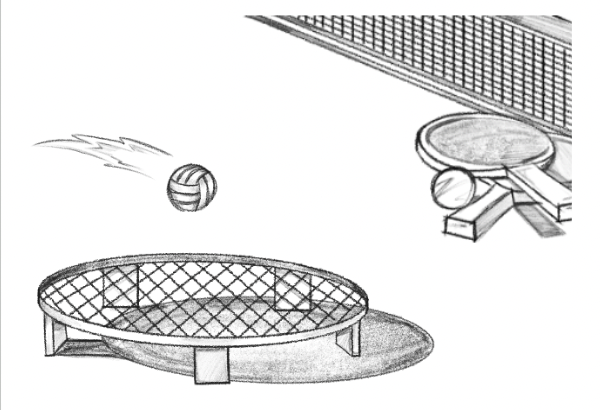
It’s 10:01 a.m., and you’ve just made it through your most boring class of the day. You know you should head to your math tutorial, but as you’re passing through the quad you see all your friends chatting and laughing at a picnic table. Why spend 40 minutes pulling your hair out over a math problem when you could just join your friends?
I’m guilty as much as any other student of using tutorial periods as a time to relax, talk with my friends, play spikeball or volleyball, grab a dessert from a bake sale or scroll absentmindedly through my phone. Considering Menlo’s academic rigor, it’s understandable why students use their triweekly tutorial as a time for escaping the pressures of school. It’s no secret that using the time in this manner is discouraged by Menlo teachers and faculty, but this doesn’t stop students from gathering on the quads and in the student center to converse or play chess. However, it’s vital that students rethink their productivity during tutorial, as doing so will respect the intention behind creating the block in the first place, drastically improve your mental and physical health, make it easier to complete your coursework and allow you to develop time-management skills that will benefit you in the future.
Tutorial hasn’t always existed; even 10 to 15 years ago, the only tutorial-esque block was optional and took place weekly before school on Fridays, according to Upper School Director John Schafer. Students and teachers alike reported appreciation for the block, and it was incorporated into the weekly schedule during the schedule overhaul of 2015.
Besides the rule that freshmen must spend tutorial in a classroom with a teacher, a policy established a few years after the creation of tutorial when it became apparent that freshmen require a bit more assistance with managing their time, tutorial is relatively unstructured. Many students take this lack of structure to mean it’s acceptable to use this block to wind down or do tasks that are not school-related.
However, we must give thought to the fact that the time for this block had to come from somewhere. Whereas there were once weekly assemblies, Schafer said, student life lost minutes in the schedule to make room for tutorials. Additionally, the classes themselves were shortened; a decision that some teachers report they agree with, whereas others wish they still had the same amount of minutes with each block per year.
When you consider the fact that so much class time was sacrificed for tutorials, spending the time on work unrelated to school just doesn’t feel fair to our teachers. “We didn’t cut out of class time and Student Life time to have pingpong time,” Schafer said. He said that though there are no rules as for where sophomores, juniors or seniors must go during tutorial, he feels that it’s fair to hold the expectation that students ‘make the most’ of the 40 minutes. He himself is often on the quad at the start of the block encouraging students to spend the time in a classroom with a teacher.
I resonate with the feeling of wanting to spend tutorial blowing off steam during a busy day, but I now begin to understand what Schafer means when he says that tutorial is not the time to do this. We must remember that Menlo is a college preparatory school; we should be able to manage our own time without being micromanaged by adults. As we progress through our time at Menlo, it’s important to take more responsibility over our schoolwork.
Tutorial is one of the aspects of Menlo’s college prep mission that helps us to do so. “When you go off to college, no one’s paying attention to you,” Schafer said. “You have a ton of free time; knowing how to use that free time is a really important skill for being a good college student, and [tutorial] will help you practice those skills now.”
Making ample use of tutorials won’t only serve to fulfill the visions of Menlo teachers and faculty; it will benefit your overall happiness. Completing work during tutorial means less work to do after school, meaning that you can spend time after school doing things that bring you joy or even going to sleep a couple hours earlier than usual. Should you do this, you won’t even need to use your next tutorial block to decompress.
There are also so many resources available, from peer tutors to teacher one-on-ones, that can help you with homework that’s harder to complete individually. I am committing to at least trying to be more productive during tutorial, and I hope that the rest of you will do the same.








